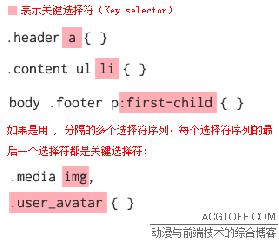SpringBoot異步調(diào)用方法實(shí)現(xiàn)場景代碼實(shí)例
一、背景
項(xiàng)目中肯定會(huì)遇到異步調(diào)用其他方法的場景,比如有個(gè)計(jì)算過程,需要計(jì)算很多個(gè)指標(biāo)的值,但是每個(gè)指標(biāo)計(jì)算的效率快慢不同,如果采用同步執(zhí)行的方式,運(yùn)行這一個(gè)過程的時(shí)間是計(jì)算所有指標(biāo)的時(shí)間之和。比如:
方法A:計(jì)算指標(biāo)x,指標(biāo)y,指標(biāo)z的值,其中計(jì)算指標(biāo)x需要1s,計(jì)算指標(biāo)y需要2s,指標(biāo)z需要3s。最終執(zhí)行完方法A就是5s。
現(xiàn)在用異步的方式優(yōu)化一下
方法A異步調(diào)用方法B,方法C,方法D,方法B,方法C,方法D分別計(jì)算指標(biāo)x,指標(biāo)y,指標(biāo)z的值,那么最終執(zhí)行完方法A的時(shí)間則是3s。
還有一種用途是當(dāng)一個(gè)業(yè)務(wù)里面需要多個(gè)請(qǐng)求時(shí),這時(shí)候異步并發(fā)請(qǐng)求所得到的回報(bào)遠(yuǎn)遠(yuǎn)是物有所值的。因?yàn)樗钱惒綀?zhí)行的,話不多說,一下是在springBoot里面使用并發(fā)請(qǐng)求;
二、spring boot中異步并發(fā)使用
2.1、appllication.yml
#****************集成Async線程池開始*******************async: # Async線程池 配置 executor: corepoolsize: 20 maxpoolsize: 25 queuecapacity: 40 keepaliveseconds: 200 threadnameprefix: appasync awaitterminationseconds: 60#*****************集成Async線程池結(jié)束******************
2.2、配置線程池
@Configuration@EnableAsyncpublic class ExecutorConfig { @Value('${async.executor.corepoolsize}') private Integer corePoolSize; @Value('${async.executor.maxpoolsize}') private Integer maxPoolSize; @Value('${async.executor.queuecapacity}') private Integer queueCapacity; @Value('${async.executor.keepaliveseconds}') private Integer keepAliveSeconds; @Value('${async.executor.threadnameprefix}') private String threadNamePrefix; @Value('${async.executor.awaitterminationseconds}') private Integer awaitTerminationSeconds; /** * 線程池 * * @return */ @Bean(name = 'asyncExecutor') public Executor asyncExecutor() { ThreadPoolTaskExecutor executor = new ThreadPoolTaskExecutor(); // 基礎(chǔ)線程數(shù) corePoolSize: 10 executor.setCorePoolSize(corePoolSize); // 最大線程數(shù) maxPoolSize: 15 executor.setMaxPoolSize(maxPoolSize); // 隊(duì)列長度 queueCapacity: 25 executor.setQueueCapacity(queueCapacity); // 線程池維護(hù)線程所允許的空閑時(shí)間,單位為秒 keepAliveSeconds: 200 executor.setKeepAliveSeconds(keepAliveSeconds); // 線程名字 threadNamePrefix: appasync executor.setThreadNamePrefix(threadNamePrefix); executor.setRejectedExecutionHandler(new ThreadPoolExecutor.CallerRunsPolicy()); // 等待所有任務(wù)都完成再繼續(xù)銷毀其他的Bean executor.setWaitForTasksToCompleteOnShutdown(true); // 線程池中任務(wù)的等待時(shí)間,如果超過這個(gè)時(shí)候還沒有銷毀就強(qiáng)制銷毀,以確保應(yīng)用最后能夠被關(guān)閉,而不是阻塞住 executor.setAwaitTerminationSeconds(awaitTerminationSeconds); executor.initialize(); return executor; }}
2.3、線程池監(jiān)控(這個(gè)可有可無,主要是為了對(duì)線程池參數(shù)及時(shí)的調(diào)優(yōu))
@RestController@Slf4j@RequestMapping('/pubapi/asyncExecutor')public class AsyncExecutorController extends BaseController { @Resource(name = 'asyncExecutor') private Executor asyncExecutor; @PostMapping('/monitor')public ResultBean<Map<String, Object>> getAsyncExecutorData() { ResultBean<Map<String, Object>> resultBean = ResultBeanUtil.error500(); if (asyncExecutor == null) { return resultBean; } try { ThreadPoolTaskExecutor executorTask = (ThreadPoolTaskExecutor) asyncExecutor; ThreadPoolExecutor executor = executorTask.getThreadPoolExecutor(); // 當(dāng)前排隊(duì)線程數(shù) int queueSize = executor.getQueue().size(); // 當(dāng)前活動(dòng)線程數(shù) int activeCount = executor.getActiveCount(); // 執(zhí)行完線程數(shù) long completedThreadCount = executor.getCompletedTaskCount(); // 總線程數(shù) long taskCount = executor.getTaskCount(); // 初始線程數(shù) int poolSize = executor.getPoolSize(); // 核心線程數(shù) int corePoolSize = executor.getCorePoolSize(); // 線程池是否終止 boolean isTerminated = executor.isTerminated(); // 線城池是否關(guān)閉 boolean isShutdown = executor.isShutdown(); // 線程空閑時(shí)間 long keepAliveTime = executor.getKeepAliveTime(TimeUnit.MILLISECONDS); // 最大允許線程數(shù) long maximumPoolSize = executor.getMaximumPoolSize(); // 線程池中存在的最大線程數(shù) long largestPoolSize = executor.getLargestPoolSize(); Map<String, Object> threadPoolData = new HashMap<>(18); threadPoolData.put('當(dāng)前排隊(duì)線程數(shù)', queueSize); threadPoolData.put('當(dāng)前活動(dòng)線程數(shù)', activeCount); threadPoolData.put('執(zhí)行完線程數(shù)', completedThreadCount); threadPoolData.put('總線程數(shù)', taskCount); threadPoolData.put('初始線程數(shù)', poolSize); threadPoolData.put('核心線程數(shù)', corePoolSize); threadPoolData.put('線程池是否終止', isTerminated); threadPoolData.put('線城池是否關(guān)閉', isShutdown); threadPoolData.put('線程空閑時(shí)間', keepAliveTime); threadPoolData.put('最大允許線程數(shù)', maximumPoolSize); threadPoolData.put('線程池中存在的最大線程數(shù)', largestPoolSize); InetAddress inetAddress = IdWorker.getLocalHostLANAddress(); Map<String, Object> resultData = new HashMap<>(4); resultData.put('ip', inetAddress.getHostAddress()); resultData.put('threadPoolData', threadPoolData); resultBean = ResultBeanUtil.success('請(qǐng)求成功!', resultData); } catch (Exception e) { e.printStackTrace(); } return resultBean; }}
2.4、代碼中使用
public void getMap(){ /** * 先將耗時(shí)的、相互之間無依賴的操作先執(zhí)行,由于其執(zhí)行結(jié)果暫時(shí)不是特別關(guān)注,所以 */ Future<String> futureA = functionA(); Future<String> futureB = functionB(); /** * 執(zhí)行其他的操作,其實(shí)functionA(),functionB()也在工作 */ aaa(); /** * 獲取異步的結(jié)果,然后計(jì)算 */ try { String resultA =futureA.get(); String resuleB = futureB.get(); } catch (InterruptedException e) { e.printStackTrace(); } catch (ExecutionException e) { e.printStackTrace(); } } public Future<String> functionA (){ Future<String> future = null; try { Thread.sleep(5000); future = new AsyncResult<String>('functionA'); } catch (InterruptedException e) { e.printStackTrace(); } return future; } public Future<String> functionB (){ Future<String> future = null; try { Thread.sleep(3000); future = new AsyncResult<String>('functionB'); } catch (InterruptedException e) { e.printStackTrace(); } return future; } public void aaa(){ System.out.println('我是'); }
以上就是本文的全部內(nèi)容,希望對(duì)大家的學(xué)習(xí)有所幫助,也希望大家多多支持好吧啦網(wǎng)。
相關(guān)文章:
1. ASP.NET Core WebSocket集群實(shí)現(xiàn)思路詳解2. .NET 6實(shí)現(xiàn)滑動(dòng)驗(yàn)證碼的示例詳解3. Spring boot項(xiàng)目使用thymeleaf模板過程詳解4. ajax動(dòng)態(tài)加載json數(shù)據(jù)并詳細(xì)解析5. 無線標(biāo)記語言(WML)基礎(chǔ)之WMLScript 基礎(chǔ)第1/2頁6. css進(jìn)階學(xué)習(xí) 選擇符7. JS實(shí)現(xiàn)單張或多張圖片持續(xù)無縫滾動(dòng)的示例代碼8. EJB3.0部署消息驅(qū)動(dòng)Bean拋javax.naming.NameNotFoundException異常9. XML入門精解之結(jié)構(gòu)與語法10. XML和YAML的使用方法

 網(wǎng)公網(wǎng)安備
網(wǎng)公網(wǎng)安備